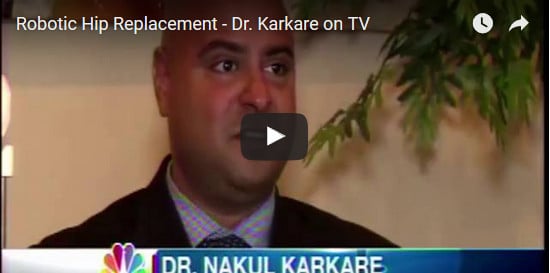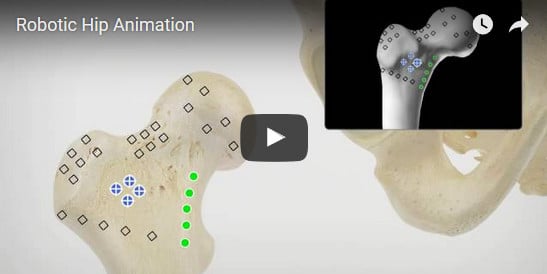About seven percent of all Americans suffer from hip pain. In New York alone, this could be as many as 600,000 people. With the condition becoming much more prevalent as we get older, this can affect about a quarter of men and women once they reach the age of 85, meaning a lot of people are going to need robotic hip replacement or another form of hip surgery.
Although traumatic injury can cause some types of hip pain, many cases are caused by degenerative joint disease (DJD), a progressive condition that causes the joint structure to break down over time.
Common causes of DJD include osteoarthritis, rheumatoid arthritis, avascular necrosis (loss of blood flow to the joint tissues) and hip dysplasia (a condition where the joint structures don’t “fit” properly).
People with chronic hip pain often suffer significant pain and disability that can interfere with routine activities of daily living. While medication and physical therapy may help in some mild cases of hip pain, moderate to severe cases typically require joint replacement surgery to achieve relief from pain and improve mobility and function of the joint.
The Benefits of MAKOplasty Hip Replacement
Robotic hip replacement, also called robot-assisted hip replacement, is a state-of-the-art technique for joint replacement that uses precision technology to improve accuracy and outcomes in patients requiring artificial hip joints.
Although the name may sound like science fiction, robotic-assisted surgeries are quite common and can provide much better results and more accurate treatments than traditional techniques.
A robot-assisted procedure still relies on the physician’s skill and experience to help control the robot and perform essential steps of the joint replacement procedure.
Dr. Karkare uses the MAKOplasty® robotic-assisted system, which relies on a robotic arm for precise placement and alignment of the artificial joint. The joint replacement procedures are performed anteriorly, through the front and side of the hip, to spare major muscles so recovery is faster and less painful.
How is MAKOplasty hip replacement surgery performed?
Prior to surgery, a three-dimensional virtual model of your hip is created to help plan your surgery for the most accurate and precise placement and optimal results. The procedure itself is performed under general anesthesia. Once the incision is made to access the hip joint, the muscles are carefully moved aside to prevent damage.
A Detailed Video: Makoplasty
The hip socket is cleaned and prepared, and the socket portion of the joint is carefully attached. Next, the end of the femur (the long leg bone) is removed to enable the ball portion of the joint to be attached.
During the procedure, the computerized system and robotic arm provide visual and tactile feedback that can aid in placement of the artificial joint components so every surgical procedure can be truly customized based on each patient’s unique anatomy and medical needs, reducing the risk of discrepancies in leg length while also decreasing the risk of abnormal friction between the implant and the natural bone.
Why choose Dr. Karkare?
Dr. Karkare is a leading joint replacement specialist in New York City, with extensive experience in robot-assisted surgery techniques aimed at achieving superior results in his patients. If you’ve been experiencing hip pain, having an evaluation is the first step in determining if surgery or a more conservative approach is the best choice for your needs. He is also one of the first doctors in New York to offer robotic-assisted knee surgery. Call the office at 516-735-4032 or schedule your evaluation today.







